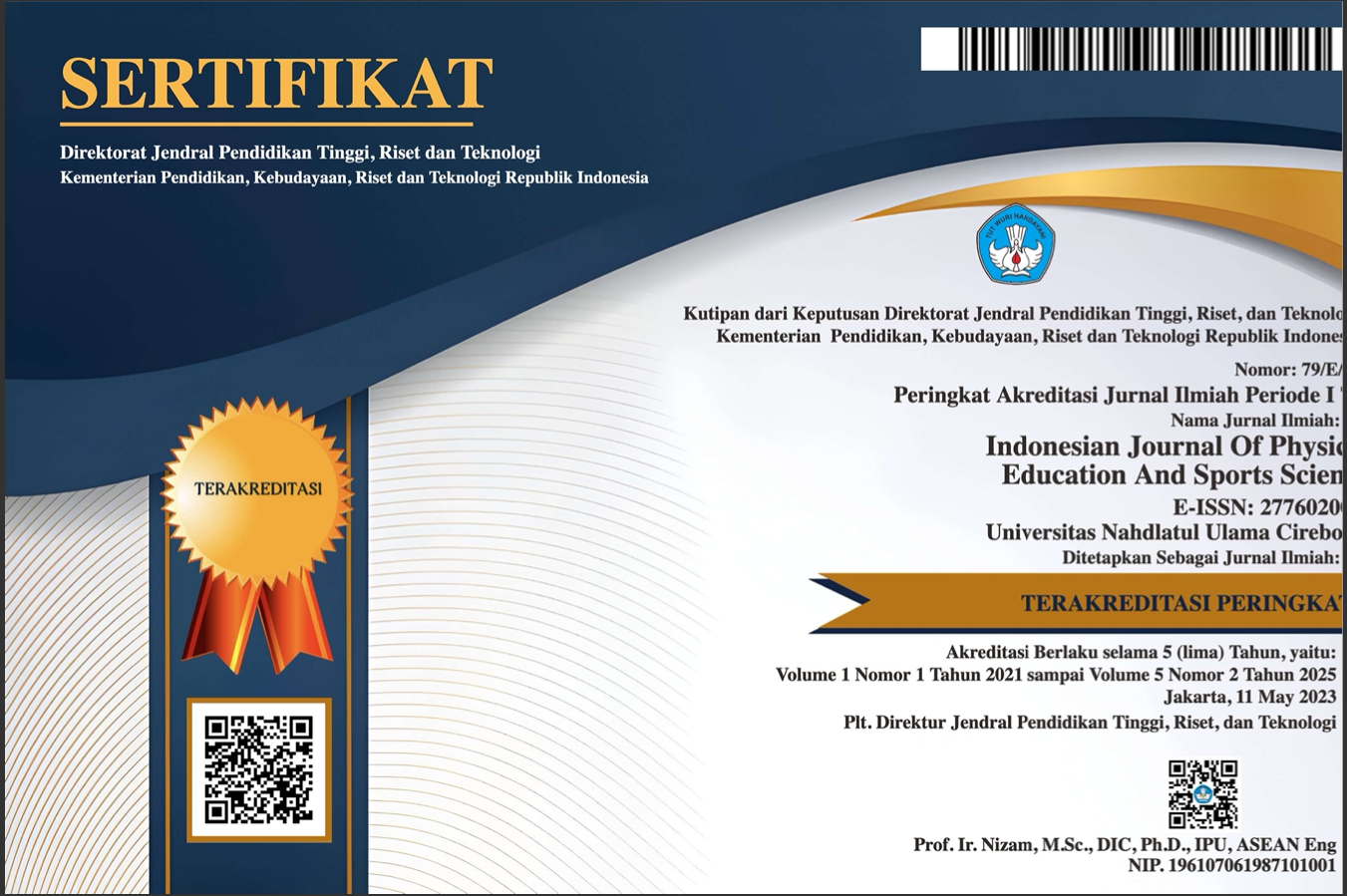Analysis Of Attack Velocity and Accuracy in Banjarbaru City Fencing Athletes
DOI:
https://doi.org/10.52188/ijpess.v4i2.730Kata Kunci:
Fencing, Attack, Speed, AccuracyAbstrak
Studi purpose. The purpose of this study is to determine the Speed and Accuracy of Attacks on Fencing Athletes when making attacks lacking speed and accuracy so as to make attack techniques not optimal and effective which have an impact on points and endurance.
Materials and methods. This research method uses descriptive-quantitative method. The population in this study were 19 Banjarbaru City fencing athletes, and a sample of 6 fencing athletes using purposive sampling technique (athletes who are still active). The research instruments used were the Kuhadja Fencing Test and the Kinovea program version 0.9.5. This study uses descriptive statistical analysis techniques.
Results. The results showed that male fencing athletes in Banjarbaru City had the highest Velocity of 3.83 m/s, the lowest Velocity of 2.94 m/s, and the average velocity of 3.39 m/s. while the highest velocity by female fencing athletes was 4.59 m/s, the lowest velocity was 2.99 m/s, and the average velocity was 3.79 m/s. In terms of accuracy, the highest score recorded among male and female fencing players is 9. However, male fencing athletes have a consistent accuracy score of 9 by producing an average accuracy of 9. Female fencing athletes showed a lot of difference in scoring accuracy, scoring from 7 to 9, resulting in an average accuracy of 8.25. Male fencing athletes are in the "excellent" category with a score of 9-10, while 50% of female fencing athletes are in the "Excellent" category and 50% are in the "good" category with a score of 7-8.
Conclusions. After the research is done, it can be concluded that the speed and accuracy of attacks on male and female fencing athletes are in the excellent and good categories, from the results of the study it is recommended that fencing sports administrators be able to improve speed and accuracy training in order to get excellent results.
Diterbitkan
Cara Mengutip
Terbitan
Bagian
Hak Cipta (c) 2024 Norhalizatul Isnaniah, Herita Warni, Mita Erliana

Artikel ini berlisensiCreative Commons Attribution-NonCommercial-ShareAlike 4.0 International License.









